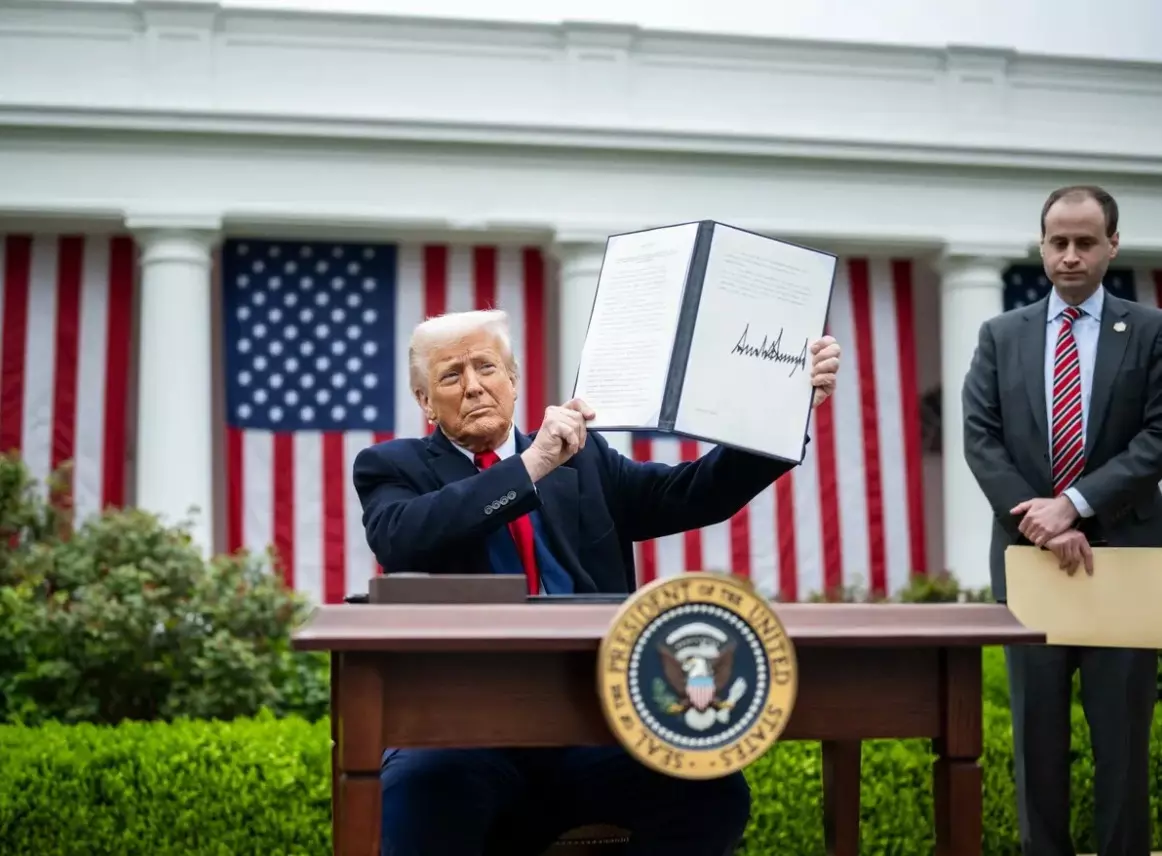
New Delhi, April 28 -- The Trump administration's tariff strategy rolled out with characteristic bravado in early April, has injected a new wave of unpredictability into global trade. But President Donald Trump claims a daily trade surplus of USD 2 billion since the tariff announcement, investment commitments worth USD 7 trillion, and the arrival of representatives from over 75 countries to renegotiate trade terms. These numbers, presented as triumphs, fit neatly into Trump's larger narrative of putting "America First" while still promising to "protect the world." Simultaneously, the administration has undertaken a revision of defence procurement processes, announced plans to review government spending, and confirmed the appointment of a new U.S. ambassador to Israel, suggesting a broad, interconnected reshaping of America's economic, strategic, and diplomatic architecture. On the surface, it appears that Trump's unconventional approach - mixing aggressive economic nationalism with bold foreign policy moves - is bearing fruit, at least in terms of initial optics and political messaging. For an American electorate weary of outsourcing, trade deficits, and foreign entanglements, such messaging resonates powerfully, painting Trump as the first leader in years willing to disrupt the status quo for national gain.
However, a closer examination reveals that the picture may not be as straightforward as Trump claims. Investment "commitments," however sizeable, are fundamentally different from executed investments. Historically, pledges of large capital flows into the U.S. economy have often been revised, delayed, or cancelled altogether due to regulatory hurdles, market volatility, or changing geopolitical climates. The surge in the trade surplus could also reflect short-term factors: exporters rushing to beat tariff deadlines, importers holding back purchases amid uncertainty, or currency fluctuations favouring American goods temporarily. In other words, early gains do not automatically signal lasting success. Moreover, while the gathering of representatives from 75 countries may demonstrate that the world is taking the U.S. stance seriously, it also underlines the level of global anxiety triggered by Washington's aggressive tactics. Instead of forging durable, rules-based trade frameworks, Trump's method risks replacing multilateralism with a fragmented patchwork of bilateral deals negotiated under pressure. For countries like India, which have historically relied on global institutions to ensure fairer access and dispute resolution, a shift towards bilateral power-centric arrangements could increase vulnerabilities, especially for developing economies. In addition, retaliatory measures, trade wars, and protectionist spirals remain significant threats that could damage global growth, including that of the U.S. itself.
Trump's political theatre - portraying himself as the lone champion of American revival while assuring the world of protection - highlights the paradox at the heart of his strategy. The commitment to an "America First" doctrine while maintaining a facade of global leadership demands a balancing act that few administrations have managed without causing diplomatic friction. Trump's approach seems more transactional than strategic, focused on quick wins rather than a coherent long-term vision for global economic stability. His policy instincts are disruptive, but disruptions without careful rebuilding can leave larger voids, harming allies and adversaries alike. For India, these developments require careful monitoring. While there may be short-term opportunities for countries willing to fill gaps left by a retrenching America, the larger risks of an unstable global order, trade fragmentation, and rising uncertainty could outweigh the benefits. Furthermore, if the U.S. economy eventually faces blowback - in the form of inflation, higher consumer prices, manufacturing slowdowns, or retaliatory tariffs - the ripple effects will be felt worldwide. Trump's strategy, therefore, while yielding dramatic headlines and immediate political capital, is still a gamble whose real outcomes may only become clear much later. Until then, cautious engagement, strategic autonomy, and an emphasis on strengthening domestic economic resilience must remain India's primary responses to the new American posture.
Published by HT Digital Content Services with permission from Millennium Post.
